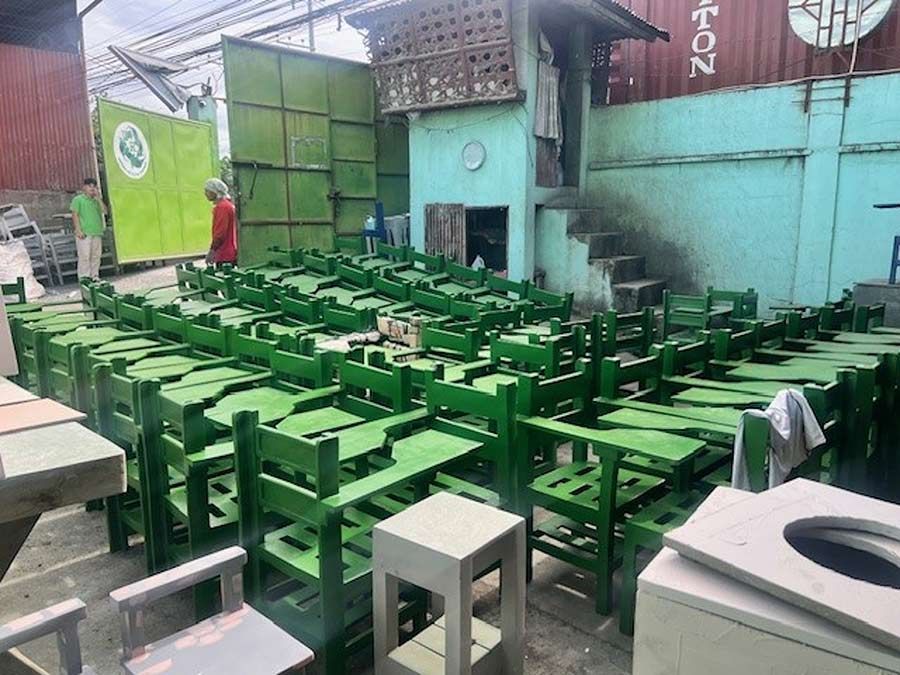THE collaborative effort between government agencies and industry associations, highlighted in a recent event by the Department of Science and Technology (DOST) outlines the strategic initiatives to bolster its integrated circuit (IC) design capabilities of Filipino engineers.
At a media briefing held recently, Engr. Niñaliza H. Escorial, Deputy Executive Director, DOST PCIEERD (Department of Science and Technology — Philippine Council for Industry, Energy, and Emerging Technology Research and Development) underscored the critical role of ICs in modern technology and detailed various programs aimed at developing a skilled workforce and fostering innovation in the electronics sector.
The DOST has made significant investments in research and development (R&D) projects within the electronics industry, demonstrating the government’s commitment to advancing this sector.
One of the key focuses of the DOST is human resource development. Through its Philippine Council for Industry, Energy, and Emerging Technology Research and Development (PCIEERD), the DOST has established numerous programs designed to cultivate a skilled workforce in IC design. These programs include research attachments, fellowships, regional consortia initiatives, and laboratory access grants, all aimed at nurturing talent and fostering innovation.
Ongoing R&D initiatives such as the Center for Integrated Circuit and Devices Research (CIDR) and various DOST-PCIEERD projects are pivotal in developing innovative solutions in the electronics sector. The ultimate target is to regain the country’s high-value market position and achieve its target of 128,000 semiconductor engineers and technicians by 2028.
These initiatives cover a broad spectrum of applications, ranging from medical devices to Internet of Things (IoT) technologies. Additionally, the Philippines boasts state-of-the-art facilities like the Advanced Device and Materials Testing Laboratory (ADMATEL), the Electronics Product Development Center (EPDC), the Additive Manufacturing Center (AMCen), and the Advanced Mechatronics, Robotics, and Industrial Automation Laboratory (AMERIAL). These facilities provide essential testing, prototyping, and manufacturing capabilities for the electronics industry, further solidifying the country’s infrastructure for innovation.
The Philippine Institute for Integrated Circuits (PIIC) plays a crucial role in funding the development of IC design expertise. Complementing this, the DOST Facilities and Lab Access Grants (FLAG) support various research and development efforts, ensuring that resources are available for ongoing and future projects.
The future outlook for the sector is encapsulated in the “Products, and Technology Holistic Strategy” (PATHS) roadmap, which aims to enhance the country’s position in the global electronics market. Key strategies for future growth identified in this roadmap include collaboration with industry partners, increased funding for R&D, and tailored programs for Filipino innovators.
The growing demand for ICs driven by the increasing reliance on electronic devices across various industries presents significant opportunities for the Philippines. By focusing on human resource development programs, the government aims to create a pool of talented IC designers, which can attract investments and enhance the country’s competitiveness.
The presence of advanced infrastructure, such as ADMATEL and EPDC, provides a strong foundation for innovation and product development in the electronics sector.
However, the Philippines faces challenges, including stiff global competition from countries with established electronics industries. To stay ahead, continuous innovation and investment in R&D are essential. Charade Avondo, President and General Manager, Xinyx Design said that talent retention also poses a challenge, given the global demand for skilled professionals in the IC design field.
Additionally, securing adequate funding for R&D initiatives remains a challenge due to competing priorities that may limit the resources allocated to the electronics sector.
To address these challenges, the Philippines should strengthen industry-academia collaboration to bridge the gap between theoretical knowledge and practical application.
Increasing investment in R&D is crucial for driving innovation and developing cutting-edge technologies.
Enhancing talent development programs by expanding existing initiatives and creating new ones will help attract and nurture young talent in the IC design field. Promoting the “Made in the Philippines” brand by leveraging the country’s strengths in manufacturing and engineering can create a strong brand identity for Philippine-made electronics products.
Present during the press briefing were Engr. Robert James Y. Lomoton, Dean, Colegio de Muntinlupa; Dr. Alex Co Abad, Asst. Professor, Department of Electronics and Computer Engineering, Gokongwei College. of Engineering, De La Salle University — Manila; Executive Director Ma. Corazon Halili-Dichosa, DTI-Board of Investments; Earl Qua, President, EIAPI (Electronics Industries Association of the Philippines Inc.); Dr. Dan Lachica, President, SEIPI (Semiconductor and Electronics Industries in the Philippines, Inc.); Engr. Niñaliza H. Escorial, Deputy Executive Director, DOST PCIEERD (Department of Science and Technology — Philippine Council for Industry, Energy, and Emerging Technology Research and Development); Dr. Louis Alarcon, Head – Microelectronics Department, University of the Philippines and Director, CIDR (Center for Integrated Circuit and Devices Research and Charade Avondo, President and General Manager, Xinyx Design.





